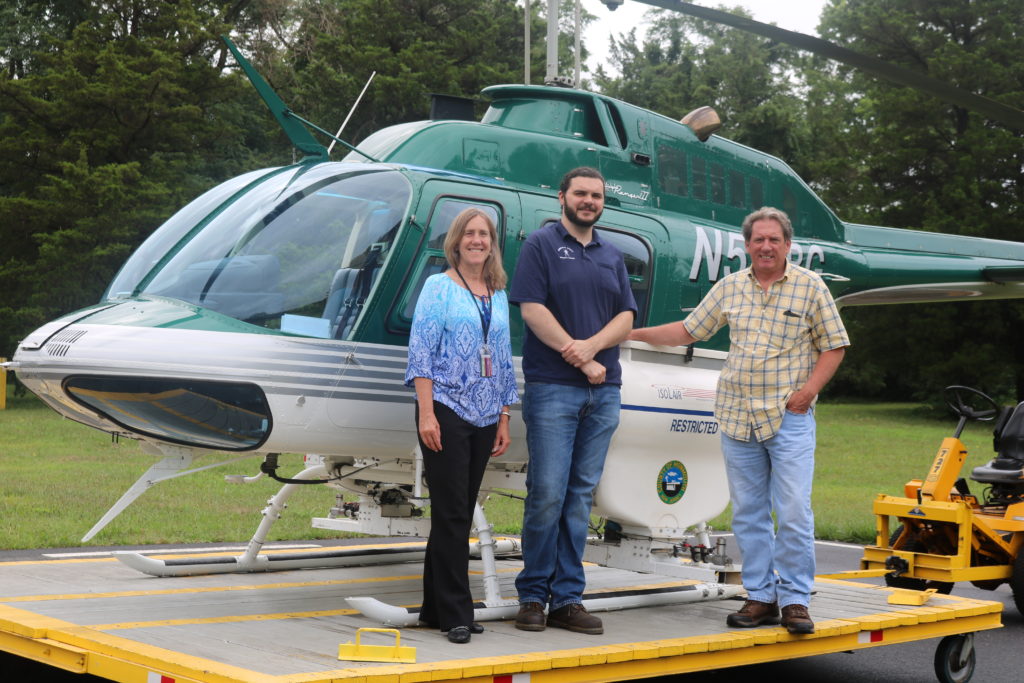TINTON FALLS – A rejuvenating summer rain is one of Mother Nature’s best friends.
But long stretches of rain, like the ones that have recently swept Monmouth County, could be Public Enemy No. 1 for the Monmouth County Mosquito Control Division. It means more waves of those pesky, blood-sucking pests are on the way.
“Everybody asks ‘how bad of a season is it going to be?’ ” Vicki Thompson, the department’s acting superintendent told The Two River Times this week. “It all depends on rain. It was crazy in early June and into July. Things were just starting to dry up but it’s back again.”
It’s up to Thompson and her team to zap Monmouth County’s mosquito population. The county division is tasked with testing, treating and analyzing the county’s 665 square miles for nearly eight months of the year, from the vast wooded tracts in Howell to the salt marshes along the Bayshore.
Mosquitos also carry a number of different diseases that can be problematic for county health officials. West Nile virus and eastern equine encephalitis are the top two local dangers. Last year, 16 of 948 breeding pools tested positive for those two diseases. But there were only two human cases of West Nile virus, and an adult control-spraying program followed. The locations of those two cases are subject to privacy through Health Insurance Portability and Accountability Act (HIPAA) provisions.
These recent rainstorms could cause a boom in West Nile virus populations, Thompson warned. According to the most recent data from the state Department of Health, there have been 65 positive West Nile virus pools statewide, compared to only 49 at this time last year. Monmouth County has tested two positive pools so far this year. At this point last year, one pool tested positive.
With a budget of $1.1 million and 26 full-time and part-time staff, Thompson and her team have to make the most out of every field trip.

Their biggest weapon is the county helicopter. Depending on the weather and wind, pilot Brian Gosnell spends hours at the controls flying low and landing in unreachable locations to drop pesticides.
Gosnell and a ground transport team covered over 1,000 acres of the shore in just two days last week. That mission spanned Monmouth Beach, Rumson, Middletown, Hazlet, Keyport, Union Beach and Aberdeen. It took seven hours to release about 4,000-5,000 pounds of larvicide in targeted areas.
Helicopter sightings have popped up recently on social media with residents asking why they’re flying so low to the ground. To be effective, Gosnell flies about 20 feet above the treetops and regularly lands in the salt marshes. Those areas are typically inaccessible by truck or foot.
There is a difference between what the Monmouth County Mosquito Control Division does and what small businesses in the mosquito control industry do. The county’s free service primarily focuses on larviciding at the source, whereas private companies typically fight the adult population by spraying, Thompson said.
“There may be companies that (larvicide) as well, but my sense is a lot of them just do fogging for the adults,” she said. “They’ll spray and you’ll be fine maybe for a week or so, but if that water’s still there pumping out mosquitos, you’ll get a new batch.”
Smaller, ground-based larvicides have proven to be effective. Inspectors deploy up to four different mosquito traps on residential properties to capture and test adults. One popular rig is a light trap baited with dry ice which simulates mammal exhalation as the dry ice melts. Another trap called The Sentinel even secretes an odor mimicking human sweat.
Residents should know the county mosquito division welcomes tips and requests from the public. Residents can place a call to the offices on Wayside Road at 732-542- 3630, or fill out a form on the county’s website at visitmonmouth.com/mosquito.

Inspectors may follow up with a visit to the affected area and seek out clues at the residence or neighboring properties. A pool cover covered with still water could be the source of a mosquito outbreak affecting a neighborhood, for example.
The county’s mosquito division has been in service for 104 years and has adapted to evolving trends across the state. Thompson even argued it’s helped Monmouth County thrive.
This article was first published in the July 26-Aug. 2, 2018 print edition of The Two River Times.














